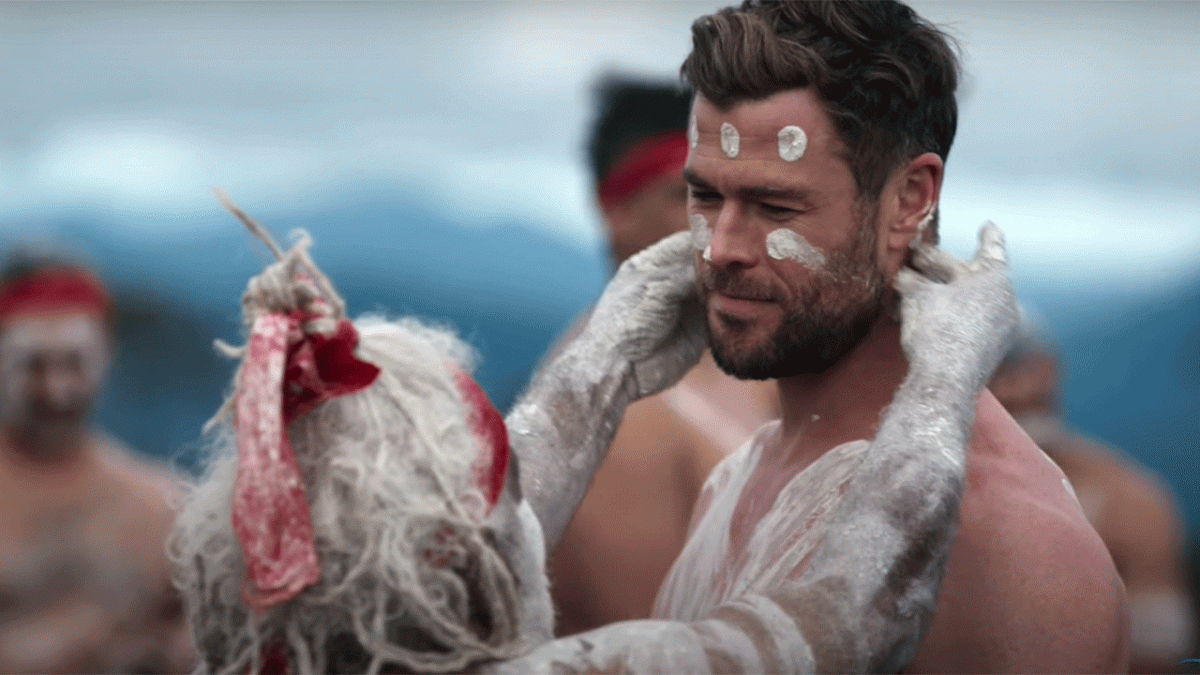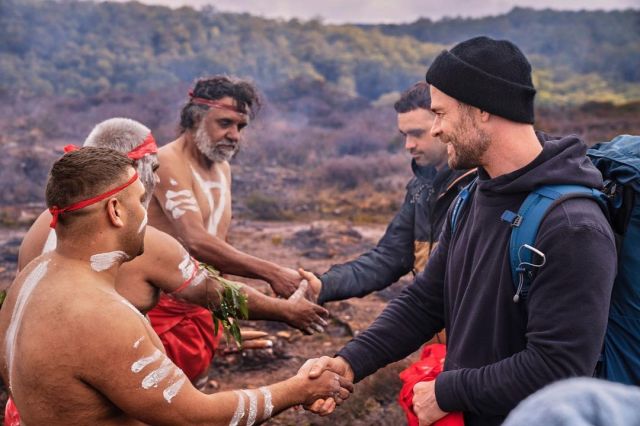
First Nations groups in NSW are divided on whether a documentary that stars Chris Hemsworth got permission from all the right people before filming on sacred land.
National Geographic’s Limitless series which airs on Disney+ has an episode where Hemsworth goes on a two-day bushwalk with his friend Gumbaynggirr-Bundjalung man Otis Hope Carey through New England National Park in northern NSW. After the trek Hemsworth takes part in a ceremony at Wrights Lookout, which is on a sacred ridge known as the Serpentine or Boorongutta’s sleeping place.
According to Brisbane Times, production company Nutopia said elders with cultural authority from three nations who share the Country — the Thunggutti, Gumbaynggirr and the Anaiwan — were all happy for filming to take place.
Anaiwan elder Les Ahoy welcomed the filming of the doco on sacred lands as “fantastic” because of the way it brought tribes together.
Executive producer at Nutopia Ruth Shurman also told the publication that production employed an Indigenous cultural consultant, worked with all three nations and included Thunggutti elders and dancers in the ceremony.
But Thunggutti dancers from Bellbrook declined to participate because members of their mob felt the ceremony didn’t get all the permissions it should have.

Members of the Thunggutti tribe from the Bellbrook area told Brisbane Times they weren’t consulted about the ceremony, even though their land sits closest to the filming site which they consider to be in their territory. Thungutti elders believe that while three nations may use the land, it is their Country and the other tribes have treaties in place to be able to access it.
“There was no consultation whatsoever,” Thunggutti elder Uncle David Toby told Brisbane Times.
“This is a community. When you get one person saying ‘Yes’ to it, that’s not right.”
Thunggutti man and Bellbrook local Gus Holten said the filmed scene with Indigenous dancers was made up of “members who weren’t initiated to the proper stage to enter such a location”.
“I don’t want to rubbish [Hemsworth], it’s good he wants to bring awareness of our culture to the world. He just has to do it the right way,” he said.
Fellow elder Aunty Ruth Dunn said she felt “it was very disrespectful to culture… to the Indigenous people in this Country”.
However, Elder Ahoy maintained the filming was done with permission from three nations and maintains that the land is Anaiwan, too.
“We have a right to practise our culture on our Country and we do so in cultural safety and knowledge,” Ahoy told Brisbane Times.
A spokesperson for NSW National Parks and Wildlife Service told Brisbane Times that Thunggutti Local Aboriginal Land Council, Bularri Muurlay Nyanggan Aboriginal Corporation in Coffs Harbour, and Coffs Harbour Local Aboriginal Land Council all provided written support for production.
The publication also reported that Thunggutti land council chairperson Lenny Wright, who lives in Melbourne, instructed the chief to write the letter but didn’t know filming would take place at Wrights Lookout until afterwards.
This division raises an issue that’s been prevalent for some time — if some elders or authorities give permission for production to take place and some don’t, on lands whose origins are disputed, what does that mean? How should that be navigated? It’s complicated and as you’ve probably noticed, the answer is different depending on who you ask.
We’ve seen this issue appear before, especially in issues of environmental activism and mining where corporations have obtained permission to raze sacred sites from land council or traditional owner authorities despite objections from the wider community.
One of the most high profile examples of this was the Victorian Governments’ bid to bulldoze the sacred Djab Wurrung “directions” tree in 2020.
Environment activists and Indigenous protestors camped at the base of the tree, climbed onto it, and formed rings around it to protect it. Dozens were arrested for their obstruction.
The Victorian government justified building its highway through sacred sites because it had received approvals from traditional owners. Despite public outcry from local mob, everything was technically legal.
While the case of Chris Hemsworth’s documentary is of course not the same as what happened to the Djab Wurrung tree, the two both signify a disconnect between authorities and community. While his team did get what it thought were the relevant permissions, perhaps there needs to be a wider conversation on who actually can give permission.
Thunggutti man Kenneth Major says the culturally appropriate thing to do in complicated situations like this one is to discuss the issue with the larger community, rather than leave the decisions with the few.
“Cultural responsibility does not run through the land council without the people,” he said.



